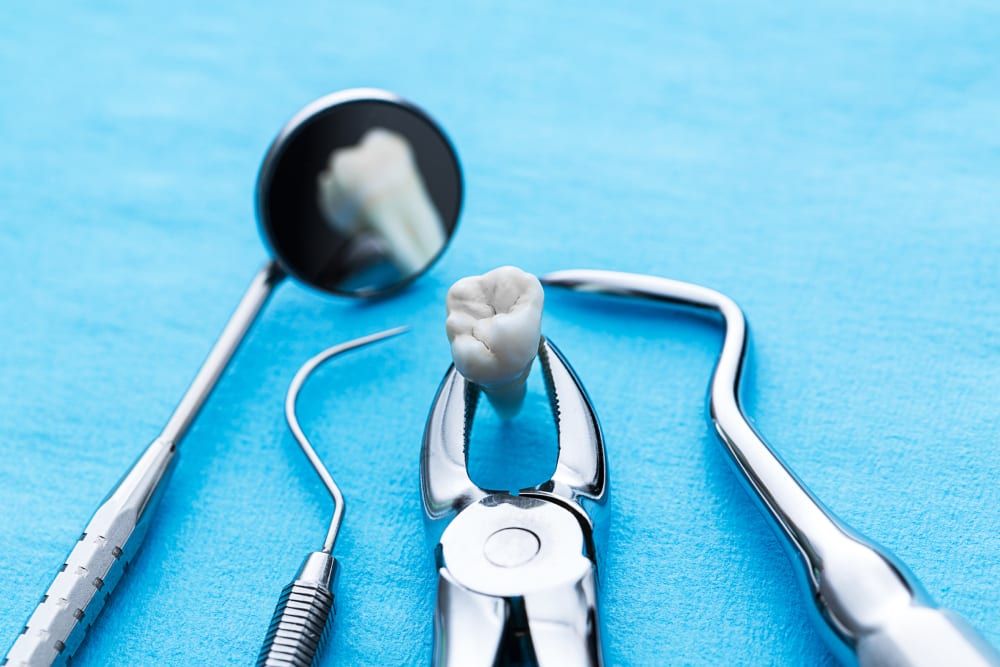Wisdom teeth, also known as third molars, typically emerge in late adolescence or early adulthood. While they can be a valuable asset in some cases, often, they pose problems that require removal. At 3D Dentistry in Bradenton, FL, Dr. Bustos specializes in wisdom teeth removal to ensure your oral health and comfort.
Wisdom teeth removal is an essential dental procedure used to extract third molars that are partially or completely impacted. These third molars are commonly referred to as wisdom teeth since they erupt around the “wisdom years” of late teens and early twenties. In our evolutionary past, wisdom teeth were essential for chewing the tough roughage that made up the majority of our diet. Overtime, however, our diets became softer and our skulls got smaller. Therefore, wisdom teeth are no longer needed for chewing and can cause problems such as overcrowding. For this reason, the majority of wisdom teeth will need to be extracted.
Did You Know?
The number of wisdom teeth someone has varies by the individual. Some people can have as many as four wisdom teeth, while others may have none, as well as everything in between.
Common Symptoms
Wisdom teeth issues may manifest through various symptoms, including:
- Pain and Discomfort: The most common symptom is pain and discomfort in the back of the mouth.
- Swelling: Swelling in the jaw and face.
- Tender Gums: Gums may become red, swollen, and tender.
- Difficulty Opening Mouth: Limited jaw movement.
- Infection: Infection in the surrounding tissues.
Why Wisdom Teeth Removal is Needed
Wisdom teeth often lack sufficient space to emerge properly, leading to various dental problems, including:
- Impaction: Wisdom teeth may become impacted, causing pain and potential infection.
- Misalignment: They can disrupt the alignment of existing teeth.
- Cysts or Tumors: In rare cases, cysts or tumors may develop.
- Dental Crowding: Wisdom teeth can contribute to crowding issues.
The Wisdom Teeth Removal Process
Dr. Bustos follows a careful process for wisdom teeth removal:
- Consultation: We assess your condition through examination and X-rays.
- Anesthesia: Local or general anesthesia is administered for a pain-free procedure.
- Extraction: Dr. Bustos expertly removes the wisdom teeth.
- Stitching: If needed, we close the incisions with dissolvable stitches.
- Recovery: You’ll receive post-operative care instructions for a smooth recovery.
Prevention and Aftercare
To prevent complications, follow these tips:
- Maintain Oral Hygiene: Keep your mouth clean to prevent infection.
- Pain Management: Take prescribed pain relievers as directed.
- Diet: Stick to soft foods initially and avoid straws.
- Swelling: Apply cold packs to reduce swelling.
Outlook
Wisdom teeth removal leads to improved oral health and a reduced risk of complications. Most patients experience a swift and comfortable recovery.
Frequently Asked Questions:
Do I need wisdom teeth removal?
You will need your wisdom teeth removed if they are partially or completely impacted. Signs that your wisdom teeth are impacted, include:
- Gums that are red, swollen, tender, or that bleed
- Jaw pain or swelling
- Problems opening your mouth and chewing
- An unpleasant taste
- Bad breath
If you have experienced any of these symptoms, then you will need to schedule a consultation with your Bradenton dentist for an examination.
What does it mean to have a wisdom tooth impaction?
A dental impaction is a term used to describe a tooth that cannot erupt properly from the gums. A partial impaction occurs when a tooth is partially erupted and partially under the gums. A complete impaction occurs when the entire tooth remains trapped underneath the gums. There are four different types of wisdom teeth extractions, including:
Mesial
This is the most common type of wisdom teeth impactions. A mesial impaction occurs when a partially erupted tooth is angled towards the front of the mouth. For this reason, mesial implications are also sometimes known as angled impactions. The impacted tooth pushes against the roots of the second molar and either be asymptomatic or cause pain.
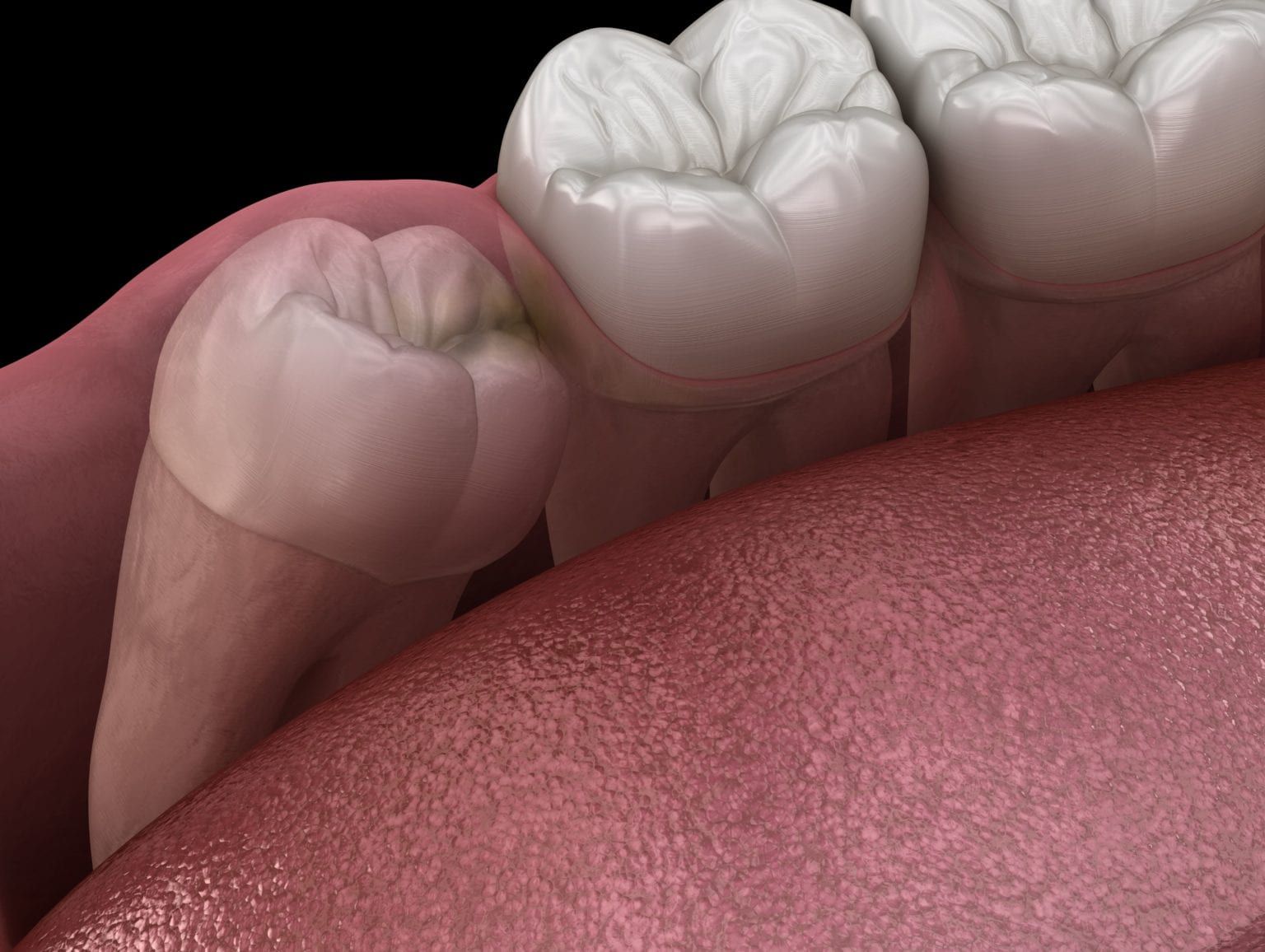
Distal
Although this impaction is another type of angled impaction, it is one of the rarest impactions. Unlike a mesial impaction, however, a tooth that is distally impacted is angled towares the back of the mouth. Distal impactions are almost extracted as soon as possible.
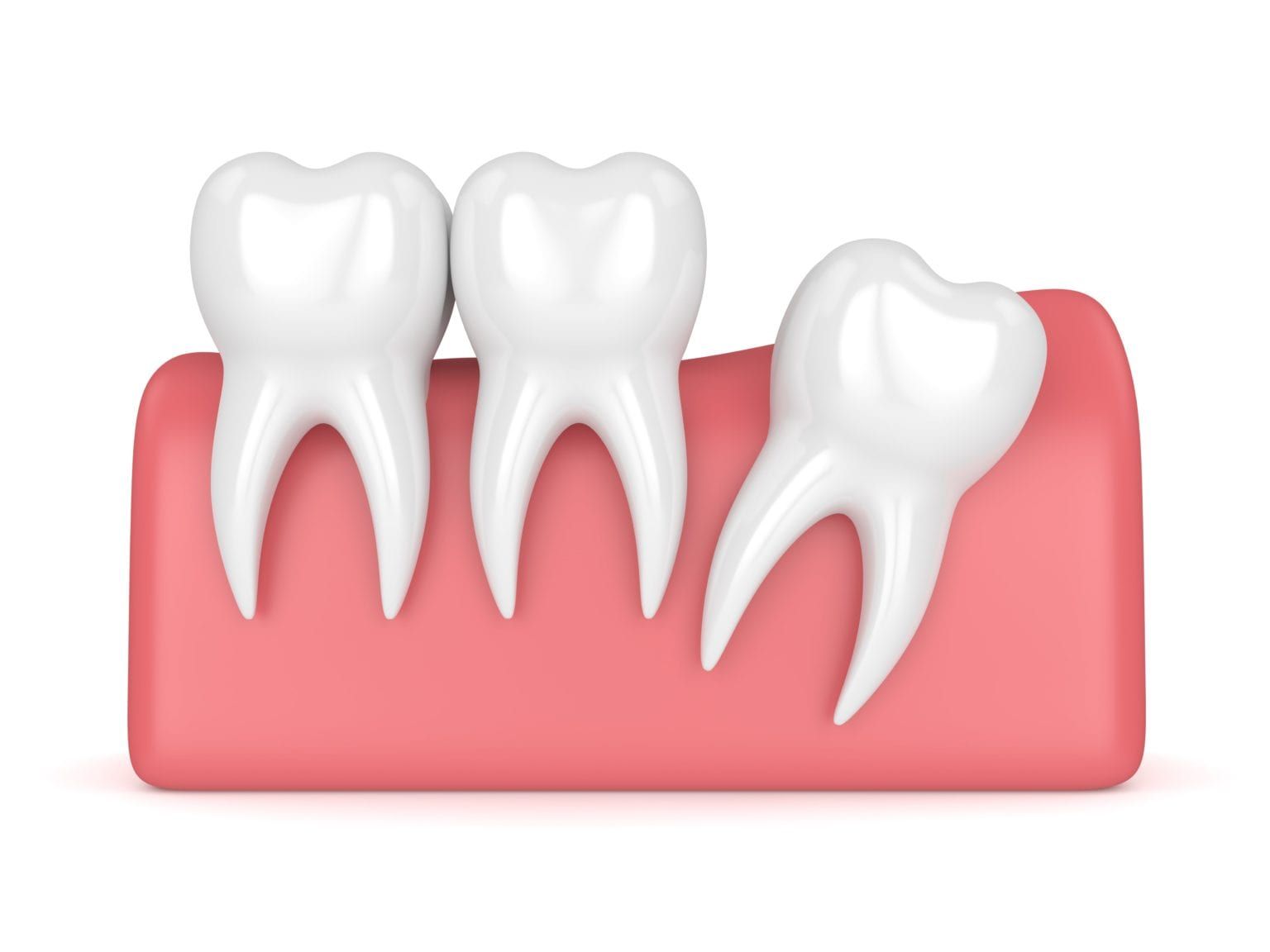
Horizontal
This is the most painful type of impaction because the tooth is lying horizontally and completely underneath the gums. Due to this position, the tooth will be unable to erupt and will instead move sideways into the adjacent teeth. Horizontal impactions are almost always extracted.
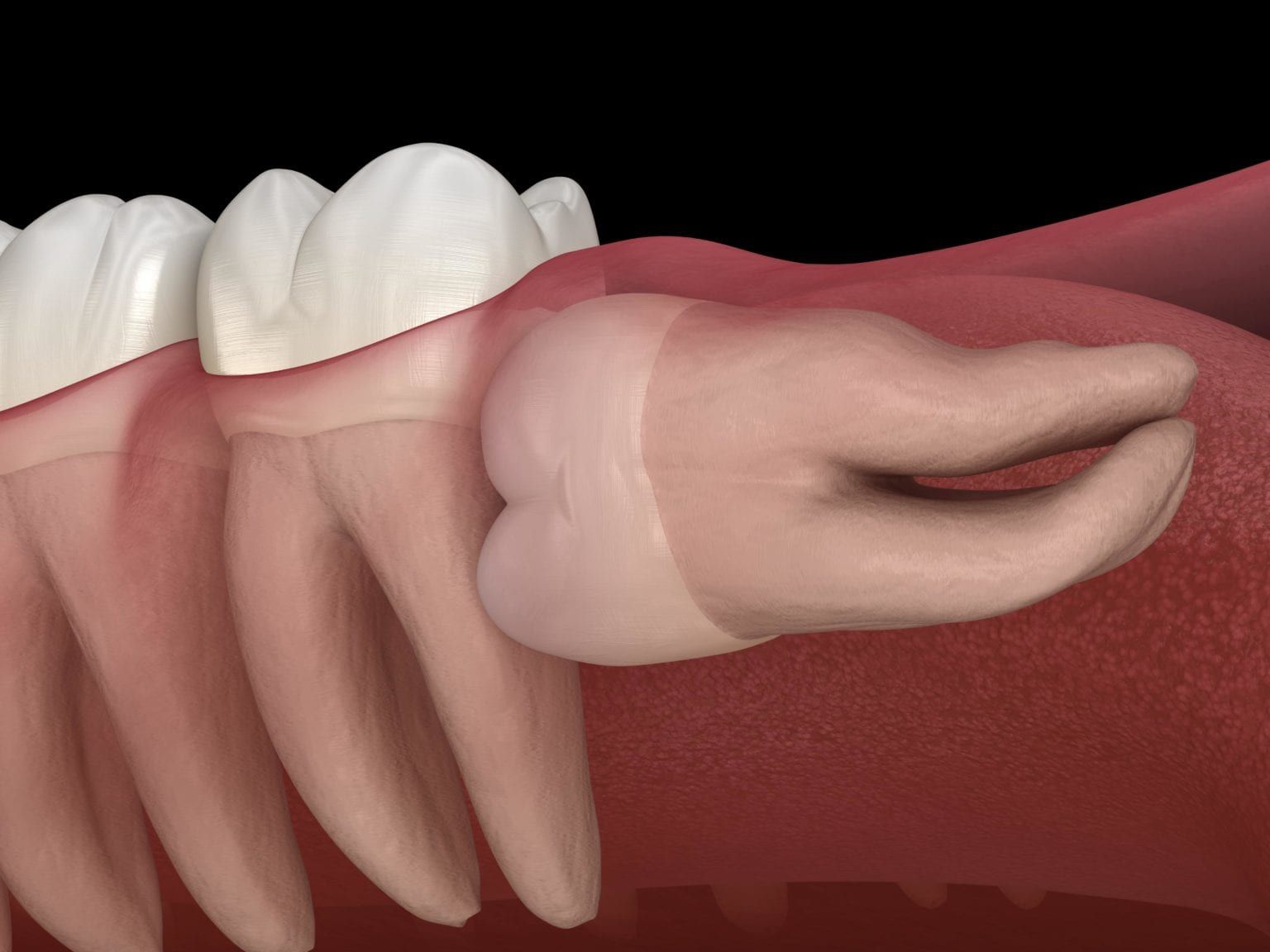
Vertical
Vertical impactions occur when the tooth is correctly positioned, however fails to erupt out of the gums. There are measures that can be taken to help the tooth erupt and there is a chance that vertical impactions will not need to be extracted.
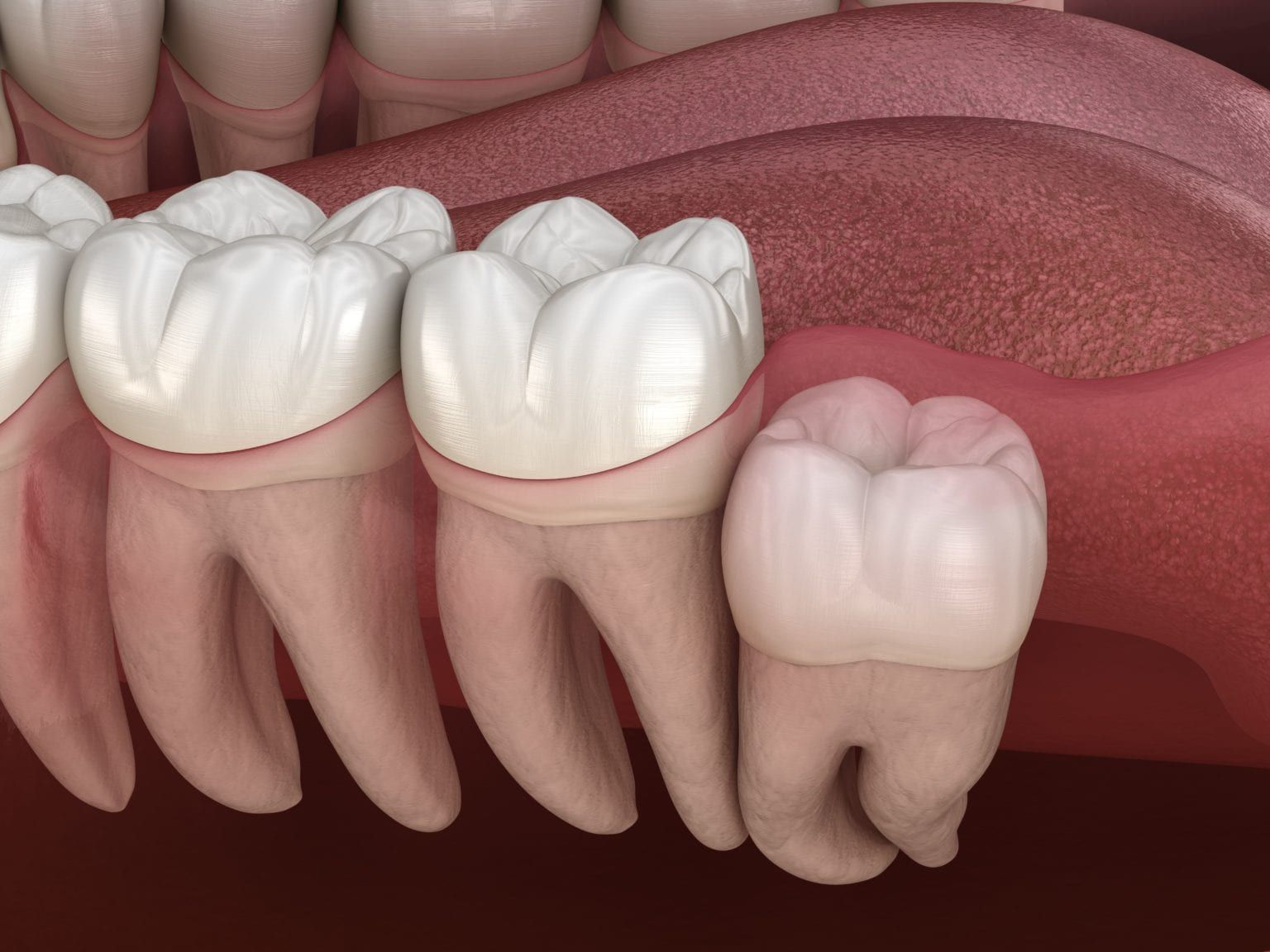
What happens during a tooth extraction?
Before beginning your extraction, your dentist will provide you with dental sedation and anesthetics so that you are both comfortable and relaxed during the procedure. Depending on various factors, such as the type of procedure or number of teeth needing extraction, your dentist may offer you varying levels of sedation ranging from conscious sedation to deep sedation.
Once the anesthetic and sedation has taken affect, your dentist will begin the procedure by using one of the following techniques:
What happens during a tooth extraction?
Before beginning your extraction, your dentist will provide you with dental sedation and anesthetics so that you are both comfortable and relaxed during the procedure. Depending on various factors, such as the type of procedure or number of teeth needing extraction, your dentist may offer you varying levels of sedation ranging from conscious sedation to deep sedation.
Once the anesthetic and sedation has taken affect, your dentist will begin the procedure by using one of the following techniques:
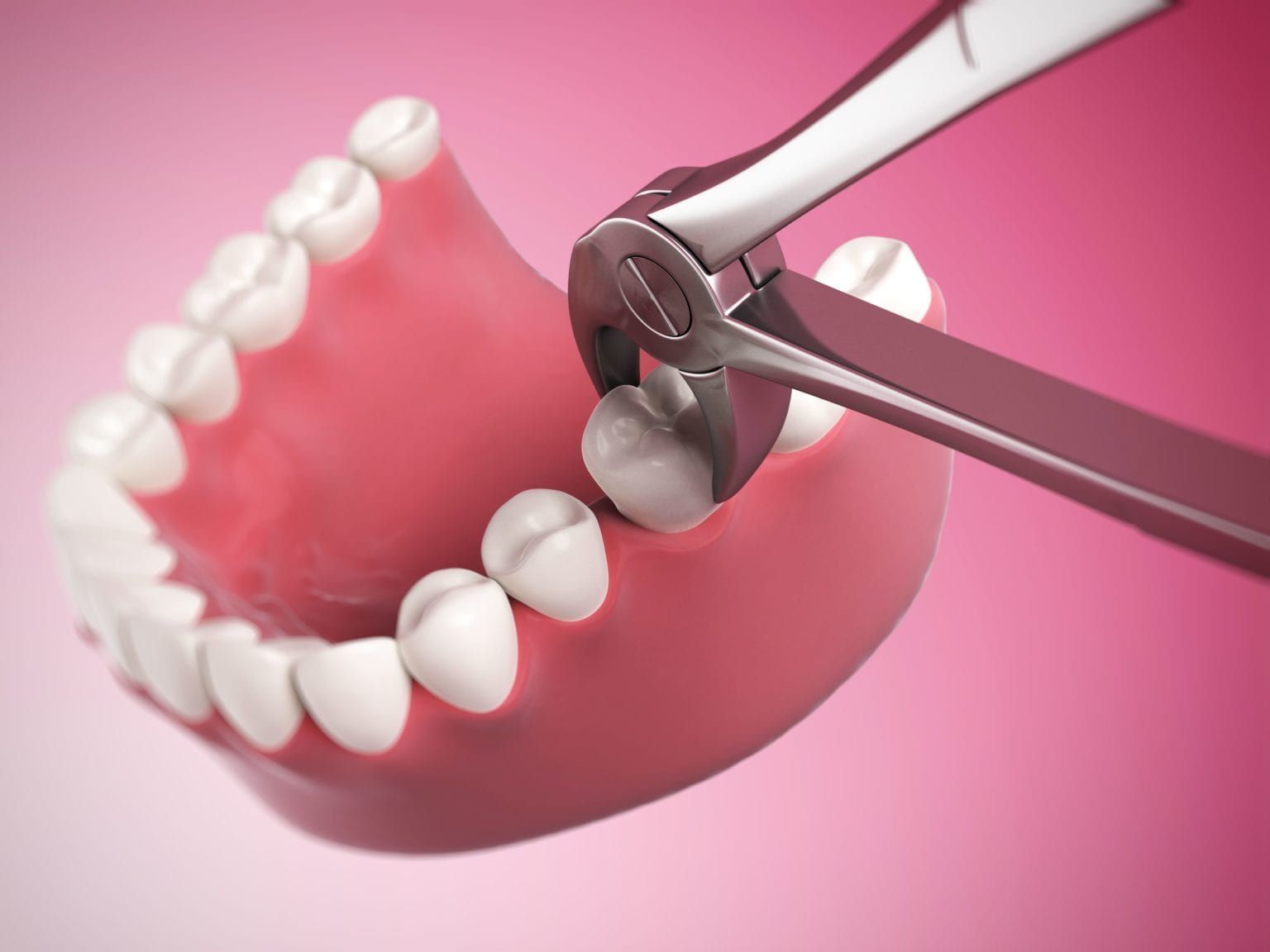
What happens after my tooth extraction?
Once your tooth extraction is complete, you will remain briefly in our office until the sedation wears off. It is important to note that you will need to have a driver bring you to and from the office. Before you leave, your dentist will provide you with postoperative instructions to follow in the days after your extraction.
These instructions will detail things such as how to keep the area clean, what to eat, how to manage pain and swelling, and what not to do to protect the extraction site. In most cases, as long as these instructions are followed, the extraction site heals in about two weeks. Within a few days after your extraction, you will return to your dentist to make sure everything is healing properly.
Your Wisdom Teeth, Our Expert Care
If you’re experiencing symptoms related to your wisdom teeth or need a consultation, contact 3D Dentistry in Bradenton, FL, at 941-253-2300. Dr. Bustos and our team are here to provide expert care and answer any questions you may have. Don’t delay in addressing your oral health needs.

